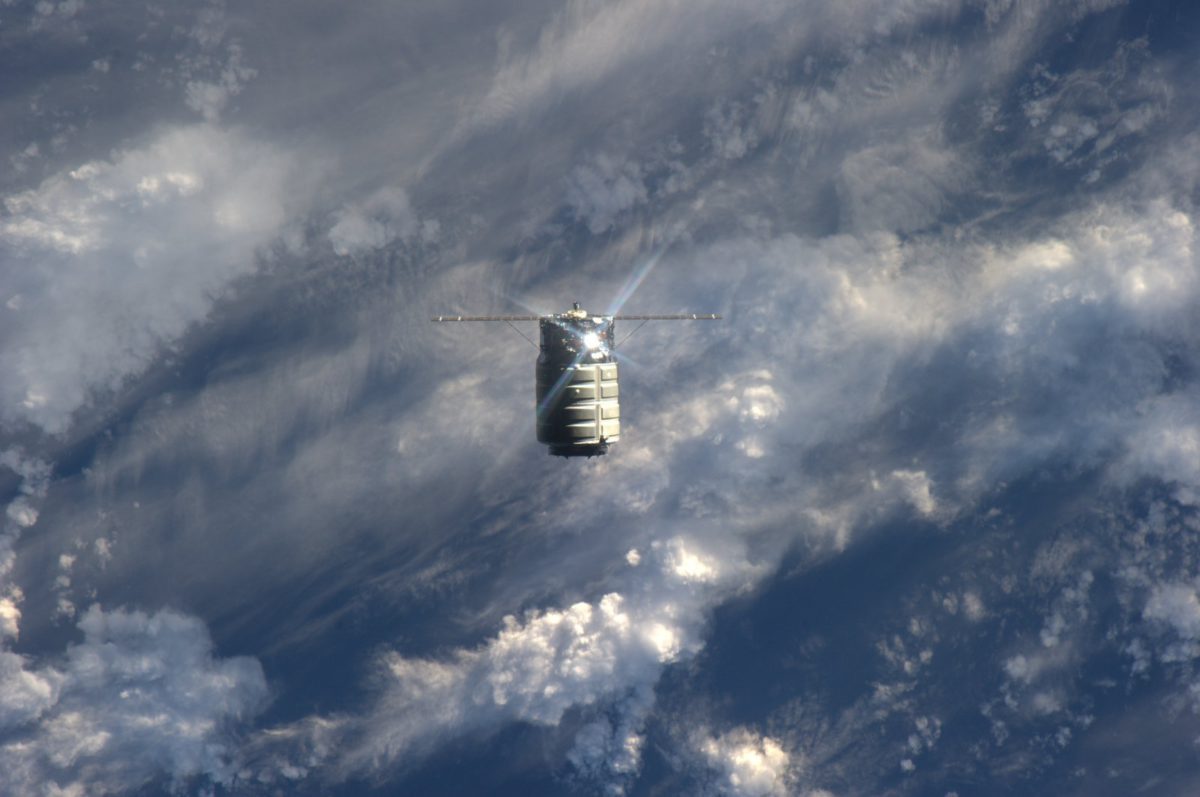Jason Davis • Aug 07, 2015
Space Station Update: Launch Logistics
It was a typical Thursday morning aboard the International Space Station, and astronaut Scott Kelly was taking pictures out the window and posting the view to Twitter. His target was Typhoon Soudelor, heading toward Taiwan and China. Dozens of people replied to the tweet, flooding the astronaut with questions he would not be able to answer individually, including "How long will the typhoon stick around?" and "How do you define morning up there?"
Back on Earth, at roughly the same time, questions tangentially related to spaceflight were piling up in a phone queue during Orbital ATK’s second quarter financial results conference call. The call was ostensibly about the company’s fiscal state, but many reporters wanted to know about actions leading to that state—in particular, how Orbital was proceeding with its Antares rocket "Go-Forward" plans.
Antares, carrying a Cygnus cargo craft bound for the International Space Station, exploded and fell back to Earth seconds after liftoff last fall. The spectacular mishap was attributed to a failed turbopump in one of the rocket’s first-stage AJ26 engines. The AJ26 is a refurbished Soviet Union powerplant originally built for Russia’s ill-fated crewed lunar landing program.
Orbital ATK permanently shelved the AJ26 after the accident, and replaced it with a different Russian-built engine, the RD-181. The first new set of RD-181s arrived at Antares’ Wallops Island, Virginia home last month, and are apparently just days away from installation into their rocket frame, according to David Thompson, the company's president and CEO.
"Together, with good progress in a number of other areas, this keeps us on track for the next Antares launch in early 2016," Thompson said. Before that happens, repairs to Mid-Atlantic Regional Spaceport launch pad 0A must be completed—a job Thompson expects to be completed in September. Antares, sporting its new engines, could be rolled out to the pad for testing as early as December.
Orbital ATK's return-to-flight plan includes a separate Cygnus jaunt to get supplies to the station sooner, courtesy of a United Launch Alliance Atlas V rocket. That mission, scheduled for early December, also gives NASA an additional future cargo backup plan. The space agency remains bullish on Orbital; it was revealed during the financial results call that NASA bought two additional Cygnus vehicles to fly between mid-2017 and early 2018.

Just as Antares’ path to launch goes through Russia, so it goes for the crew-ferrying side of ISS operations. On Wednesday, NASA Administrator Charles Bolden announced the agency was spending $490 million to buy a new round of astronaut seats aboard Soyuz spacecraft. This, Bolden argued in a letter to Congress, is a result of chronic budget-slashing that has stunted the growth of NASA’s commercial spaceflight program since 2010.
"Unfortunately, for five years now, the Congress, while incrementally increasing annual funding, has not adequately funded the Commercial Crew Program to return human spaceflight launches to American soil this year, as planned," Bolden wrote. NASA’s current human-spaceflight-as-a-service target is 2017, though the administrator warned that date is jeopardized by a possible funding shortfall for fiscal year 2016. "If this occurs, the existing fixed-price CCtCap contracts may need to be renegotiated, likely resulting in further schedule slippage and increased cost."
The same day Bolden lobbed the Soyuz news to Congress, Michael Suffredini, the head of the ISS program, announced he was leaving the agency for private industry; despite the timing of both news releases, there is no outward evidence the departure is linked to the Soyuz seat purchase. Suffredini, who saw the station to completion through the post-space shuttle Columbia era, transformed the ISS into a "fully functional microgravity laboratory," as human spaceflight head William Gerstenmaier put it. Kirk Shireman, deputy director of the Johnson Space Center, succeeds Suffredini.
Ten hours and more than six orbits after Scott Kelly tweeted his Typhoon Soudelor image, the astronaut declared he was heading to bed. "Riding out with the sun," he said, posting a photo of a sunset over a darkened Earth limb, outlined by the planet’s blurry blue atmosphere.
Day 132. Riding out with the #sun. Good night from @space_station! #YearInSpace pic.twitter.com/nYsW6t0bSK
— Scott Kelly (@StationCDRKelly) August 6, 2015Let’s Go Beyond The Horizon
Every success in space exploration is the result of the community of space enthusiasts, like you, who believe it is important. You can help usher in the next great era of space exploration with your gift today.
Donate Today

 Explore Worlds
Explore Worlds Find Life
Find Life Defend Earth
Defend Earth


